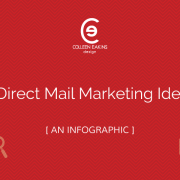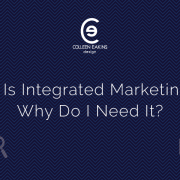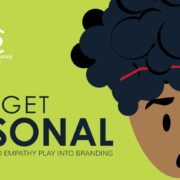As a small or medium-sized business owner the more data and information that you have regarding your operations, the better. Especially if you are working to establish a cohesive branding message to appeal to a specific type of consumer.
With the widespread use of technology, companies of all sizes have developed content strategies to build loyalty, trust, and authority within their selected niche
The most significant part of this marketing strategy is fine-tuning your content, whether it is blog content, social media shares, or email messaging to meet the needs and wants of the buyer persona – or ideal customer – you are seeking to attract or retain.
What is a Buyer Persona?
What exactly is a buyer persona, you ask? Typically, a buyer persona gets constructed using interviews with real buyers. People who are interviewed give real-world answers to what prospective customers might be thinking and doing when evaluating consumer options. This data provides valuable insights into the concerns, attitudes, and other criteria potential customers use to help them make a buying decision.
As you can imagine, knowing the motivations that fuel your ideal customer is beneficial for numerous reasons.
- Gives you a greater understanding of the language buyers use.
- Aligns your messaging to improve company communications with clients.
- Helps you streamline your marketing campaigns to appeal to your preferred audience.
Luckily, it isn’t as hard as you might think to establish a buyer persona to define your preferred market sector more effectively.
Who Is Your Customer?
The first step in setting up a buyer persona is envisioning the person in your mind and giving them a name. This imaginary person should broadly represent the demographics of your ideal customer. Be sure to outline the habits, hobbies, interests, values, and other indicators that help drive his or her consumer decisions.
If you already have an existing customer base, you may already have a substantial amount of information available from platforms including Google Analytics, Google Webmaster Tools, internal tracking, Facebook Insights, and Facebook Analytics to learn more about the type of people who are already engaging with your content, products, or services. These comprehensive reporting platforms contain a treasure trove of data regarding your website visitor profiles and your social media audience and reach. Some of the core demographic data provided include location, gender, age, general interests, affinity groups, relationship status, buying habits, and more.
Business owners who have a presence as a ‘brick and mortar’ operation may also use tools like transaction history, customer questionnaires, or feedback forms to gather more invaluable information about their customer base to define the buyer personas of their business better.
For this example, let’s use Sienna the Salon Owner. Whenever someone comes in for services, she gathers information to serve her clients better. The type of information she collects includes the customer’s name, contact information, age, birthdate, how frequently the client visits, what services they have purchased, if other family or friends are customers, the amount of money they spend on average, if they add-on services while at the salon, and if or how often related products get purchased.
Digital Solutions for Real World Business
Using a CRM (customer relationship manager), she saves this information for future use, as well as integrates it with her email marketing software for appointment follow-ups, special offers, promotional offers, and birthday greetings. To streamline her operations, she synchronized appointment setting software that allows customers to book or cancel appointments from the convenience of their smartphone or computer.
When each client leaves, she asks them to fill out a questionnaire or feedback form on that day’s visit. Sienna makes a note of their feedback in her CRM for reference. If a pattern of complaints arises, she is in the first line of defense to handle them.
This information can help detect issues and provide a better customer service experience. If someone had a bad experience, this issue can be resolved quickly and in a professional manner. A prompt and courteous resolution is always better than letting the client leave without saying a word to you and writing bad reviews or comments on social media platforms instead.
Keep the Conversation Going!
Asking what clients think is essential to connecting with them on a deeper level. Many of Sienna’s customers share their thoughts and concerns about beauty, offering an opportunity for her and her staff members to provide their expertise. (Or product and service recommendations!)
Let Data Be Your Guide!
On an aggregate level, Sienna can get a broader overview of her entire customer base. She can figure out, on average, what each client spends at the salon, the frequency of visits, and other data that helps improve the bottom line of the company.
These buyer habits play a critical role in her buyer persona. Knowing this, she can then aim to attract other new clients like her existing ones.
In addition to operating her physical location, she makes sure to maintain the company presence on social media platforms to engage with clients, as well as promote her salon.
She takes the time to ask her clients to leave a review of the salon on her business page, as it helps build trust and authority in the area she serves, which is good for business! By evaluating her insights and stats programs, she can learn more about her audience, so she’s able to adjust her content and share to appeal to them. Since her business has everything to do with image, she learns that pictures and videos always outperform other types of shares. By sharing more photos and videos, she is appealing to her core audience to get more shares, likes, and comments.
Her website plays a significant role in providing more useful visitor data including conversion rates, time spent on the site, the total number of page views, and ecommerce sales.
If you haven’t already established your preferred buyer persona, be sure to contact the branding experts at Colleen Eakins Design for more information today!
I’m a Digital Marketer & Freelance Writer with a penchant for all things forward-thinking and positive. I’m a fan of abundance and progress.


 ©2018, Colleen Eakins Design
©2018, Colleen Eakins Design ©2018, Colleen Eakins Design
©2018, Colleen Eakins Design

 ©2018, Colleen Eakins Design
©2018, Colleen Eakins Design